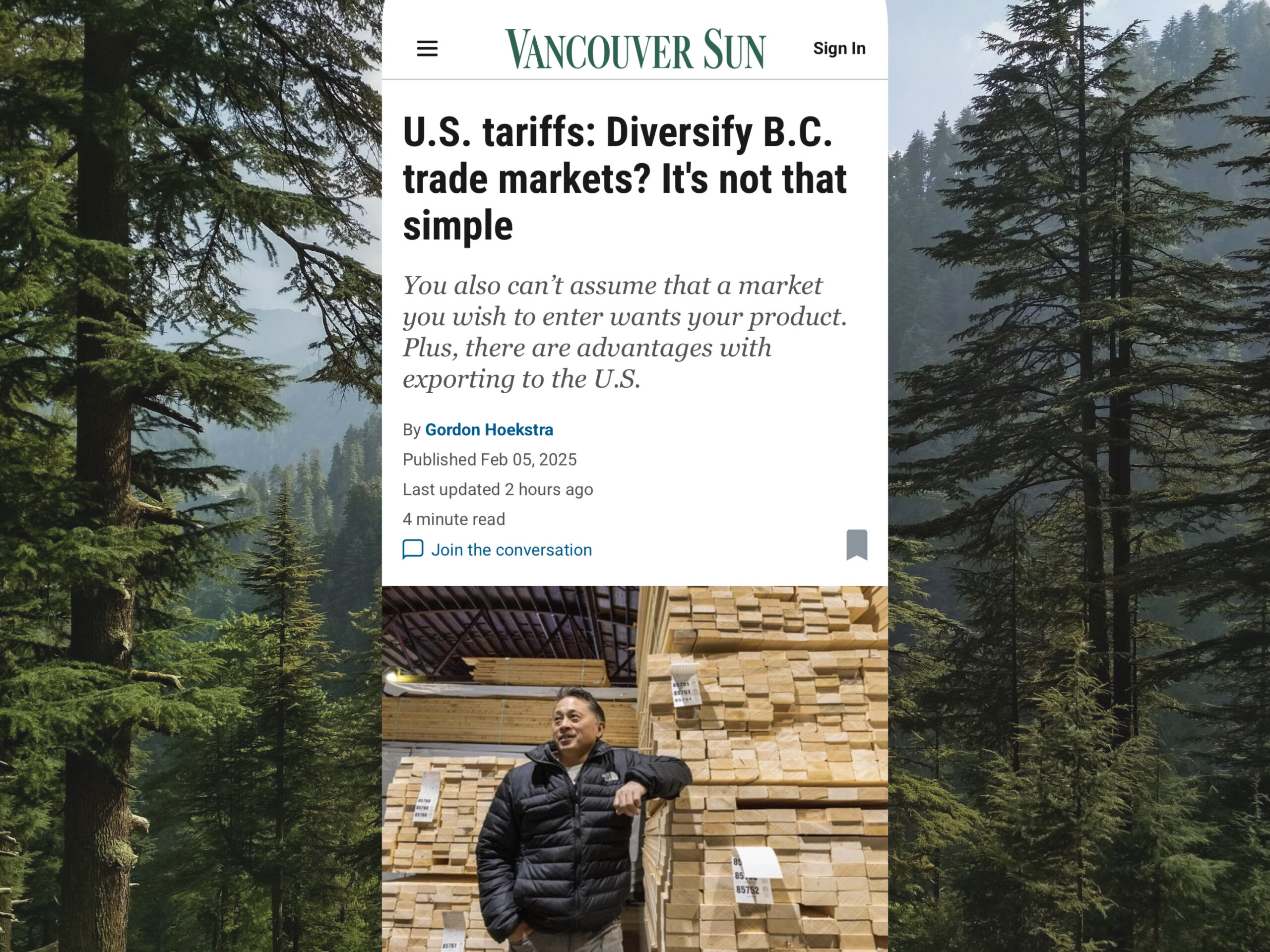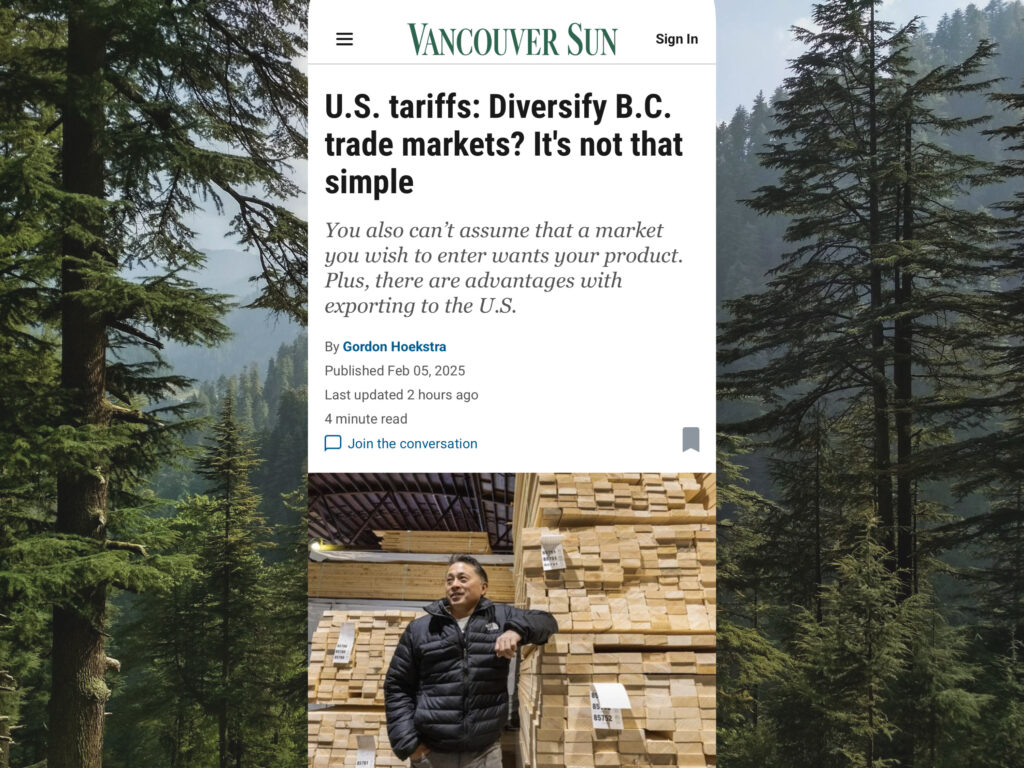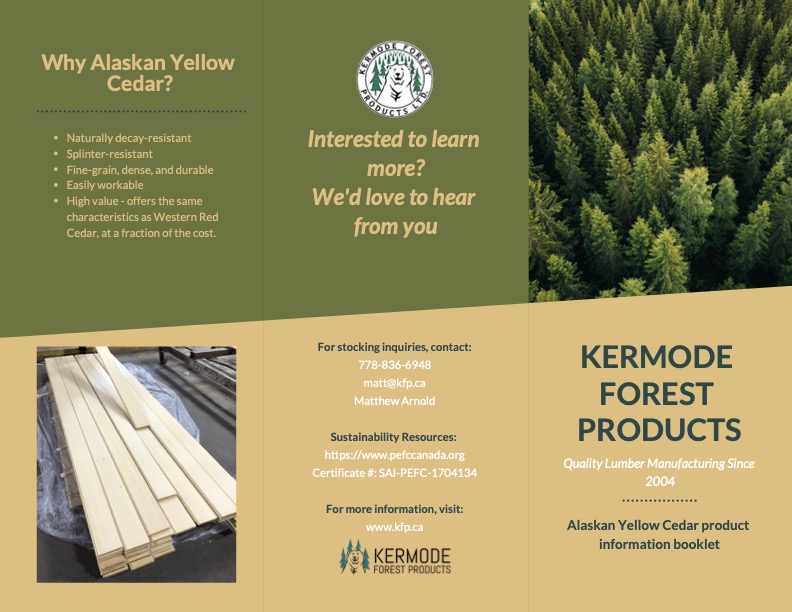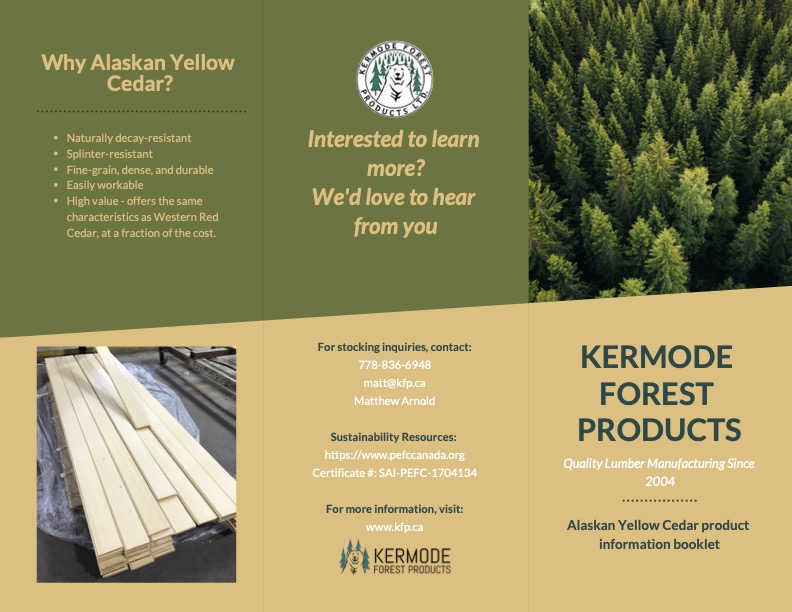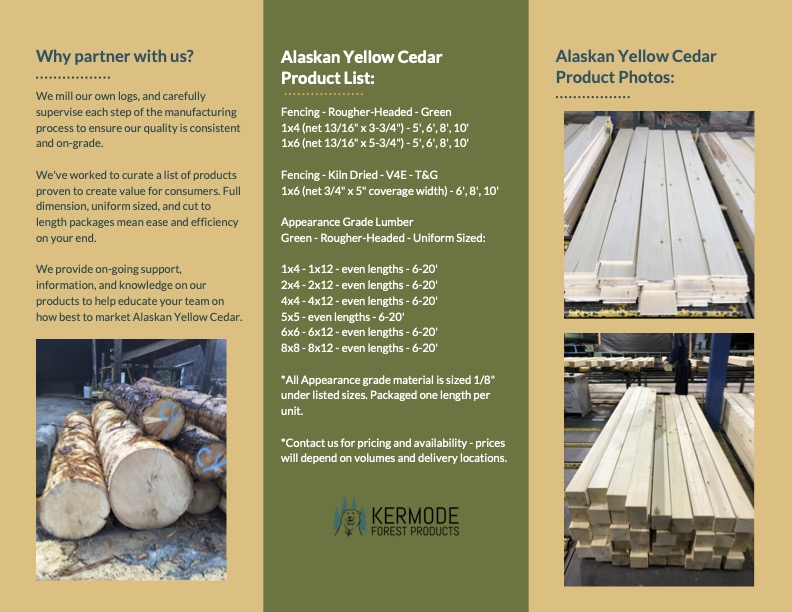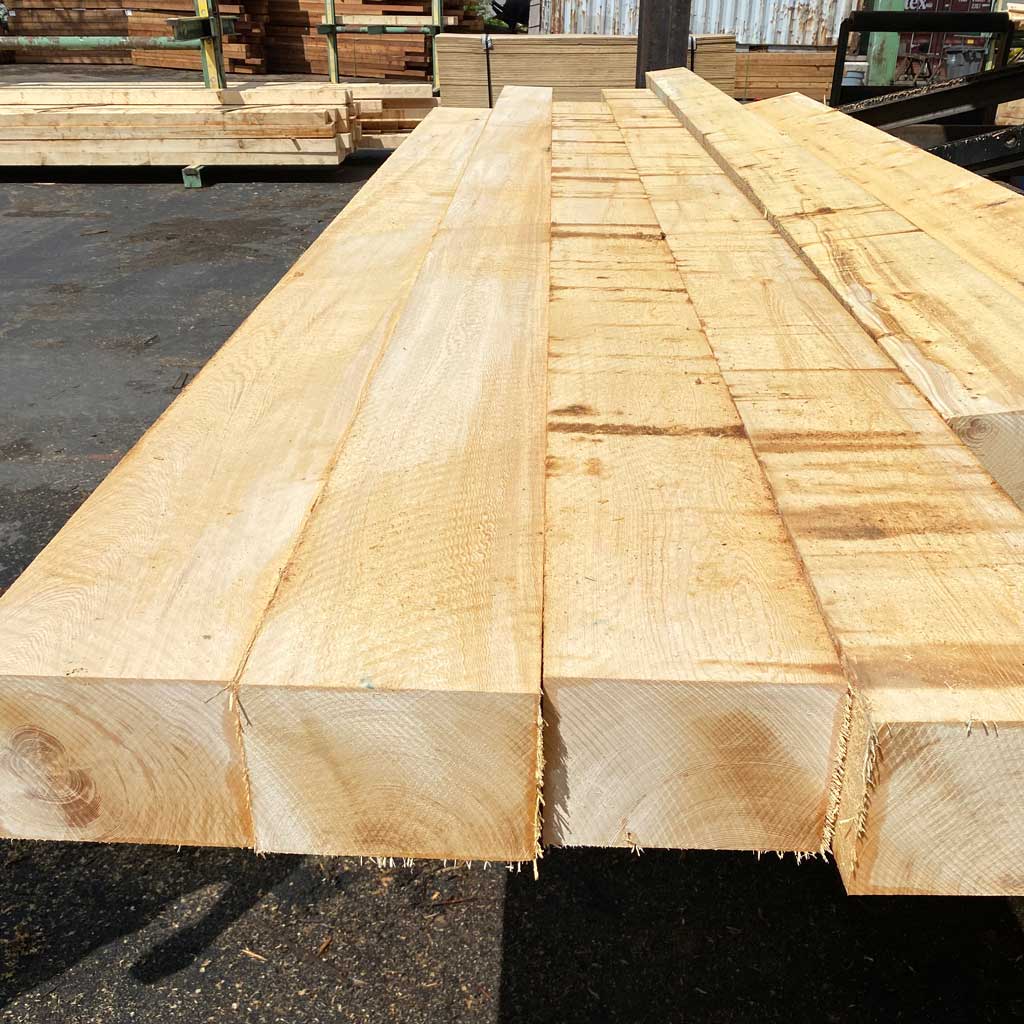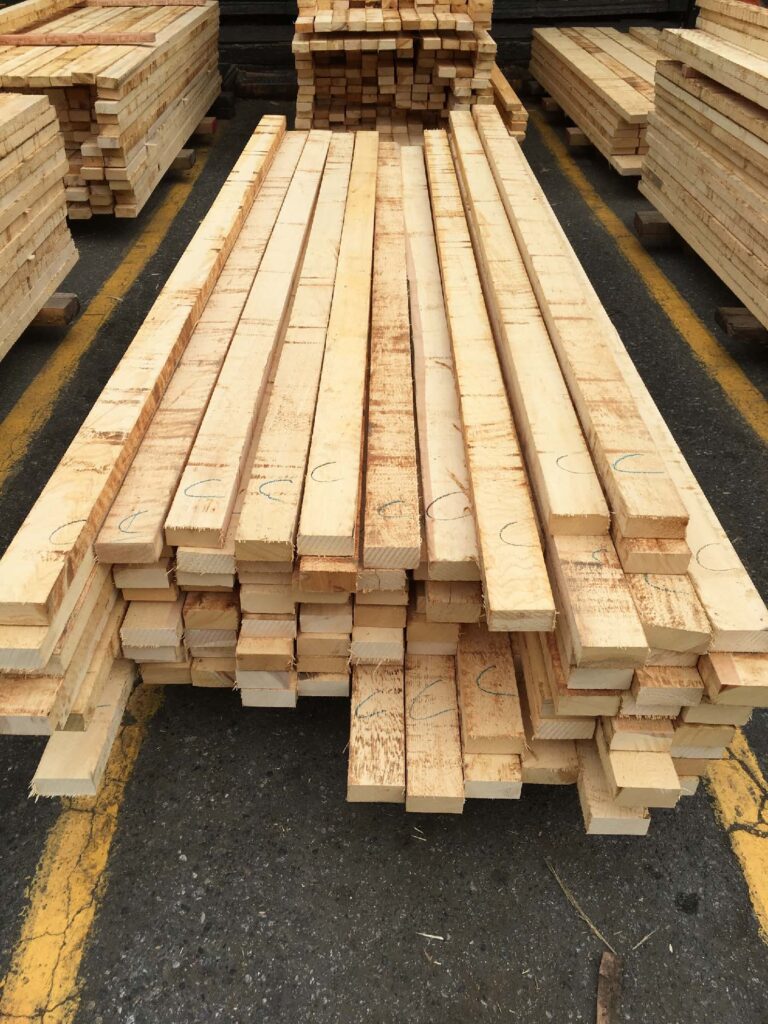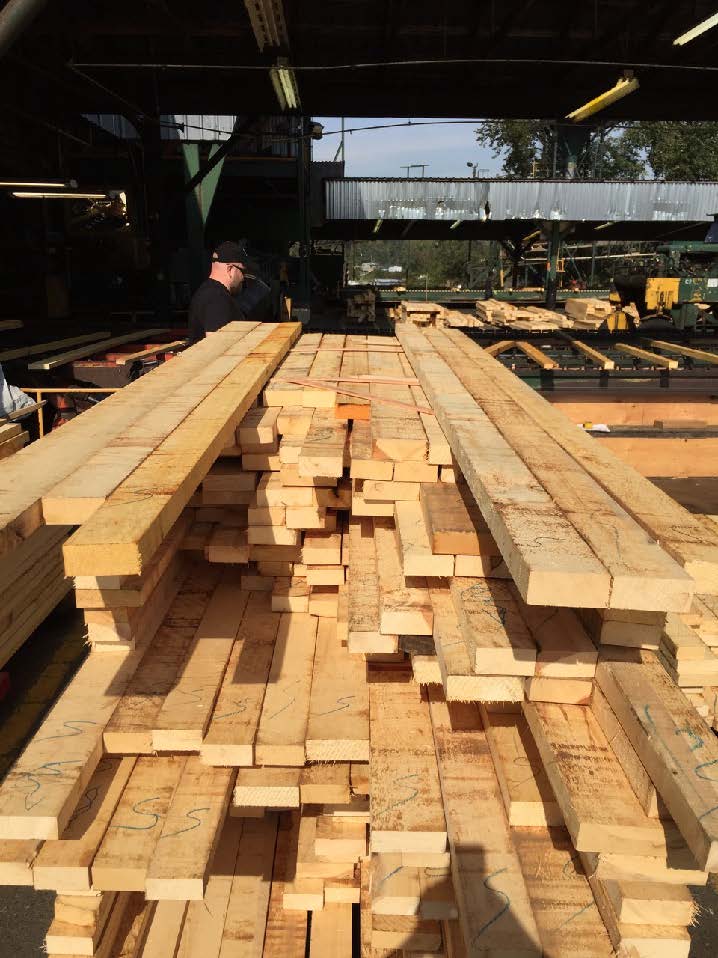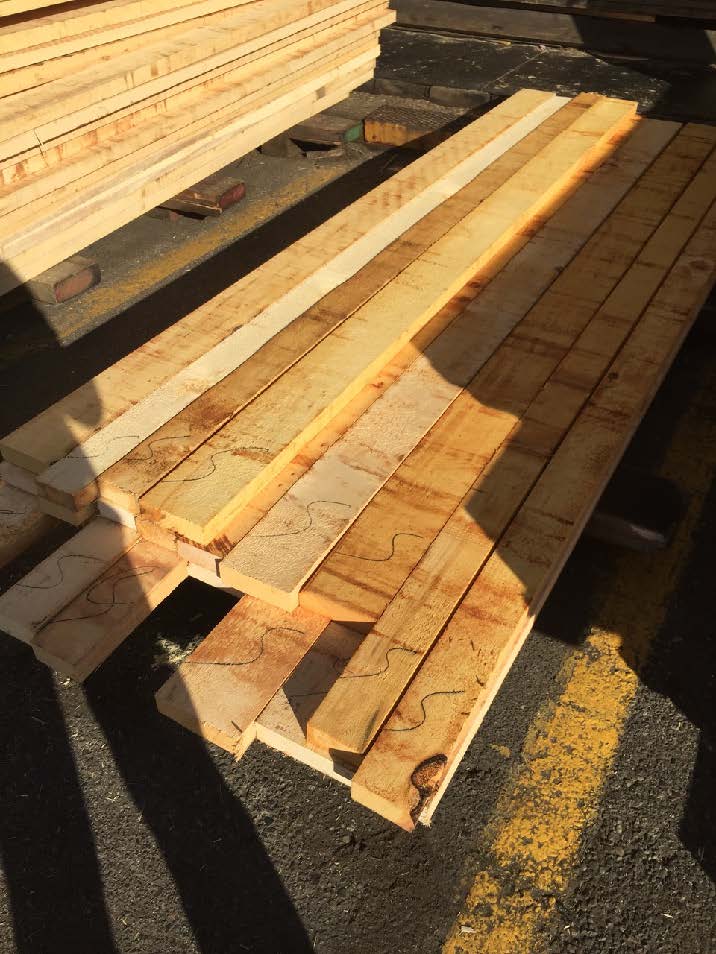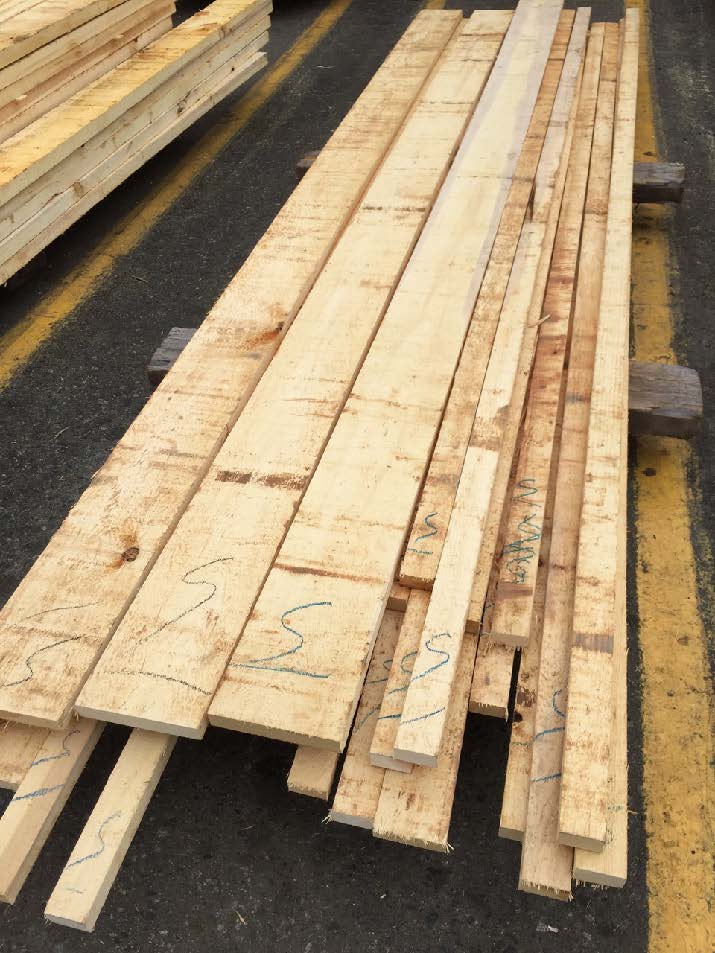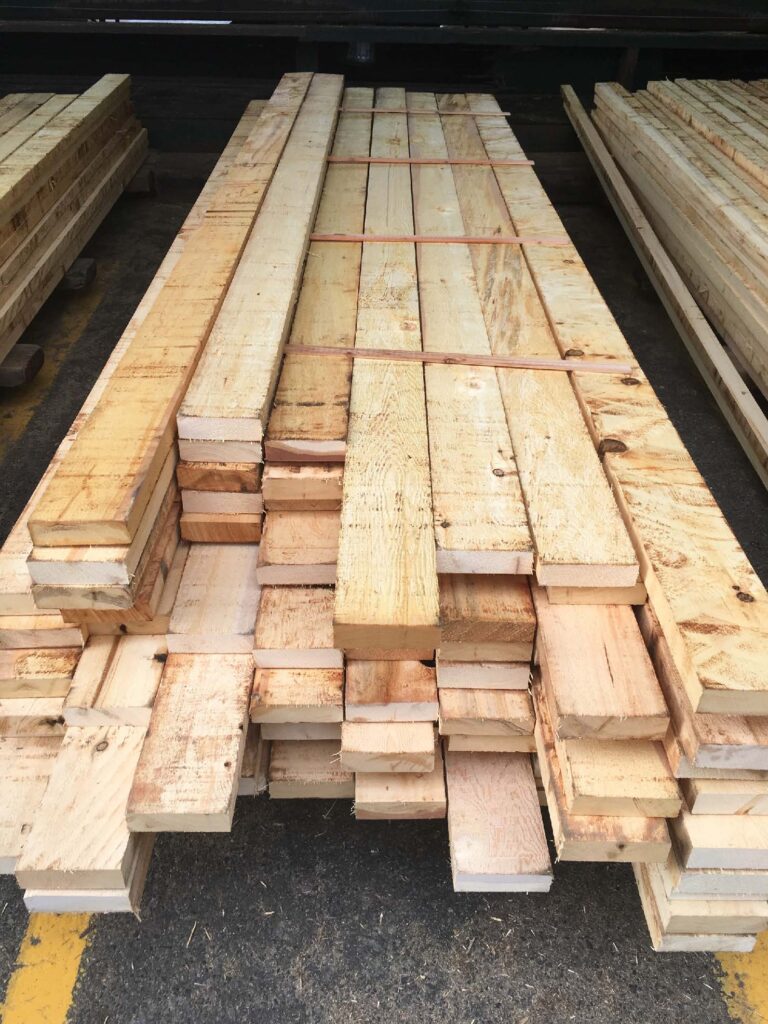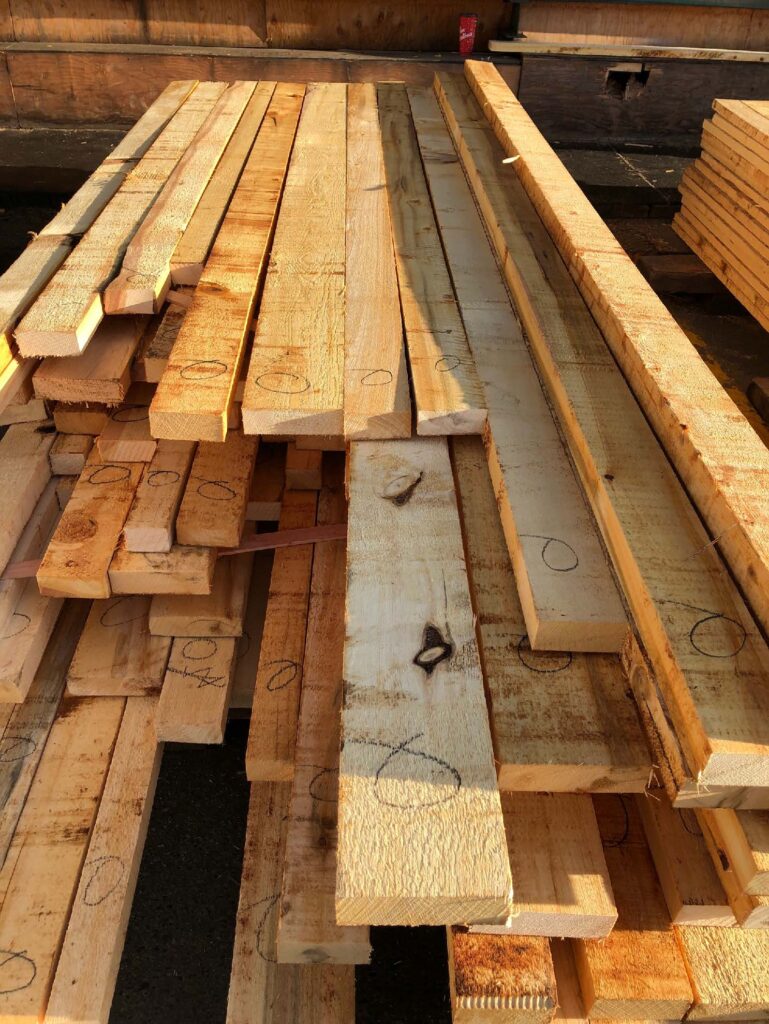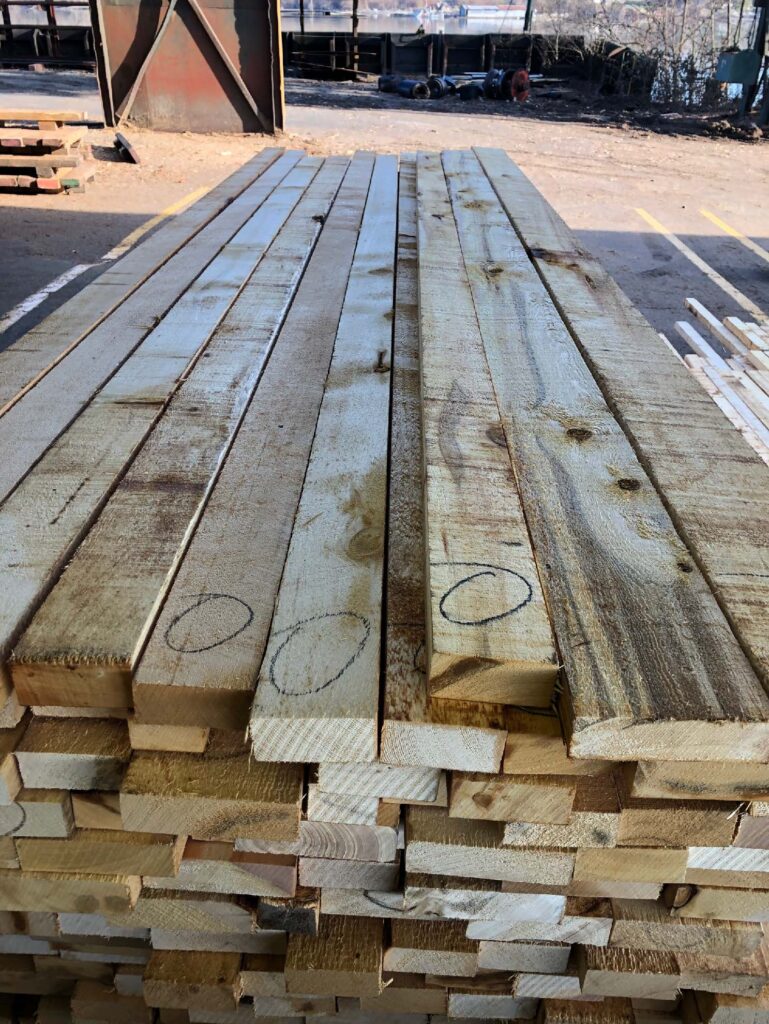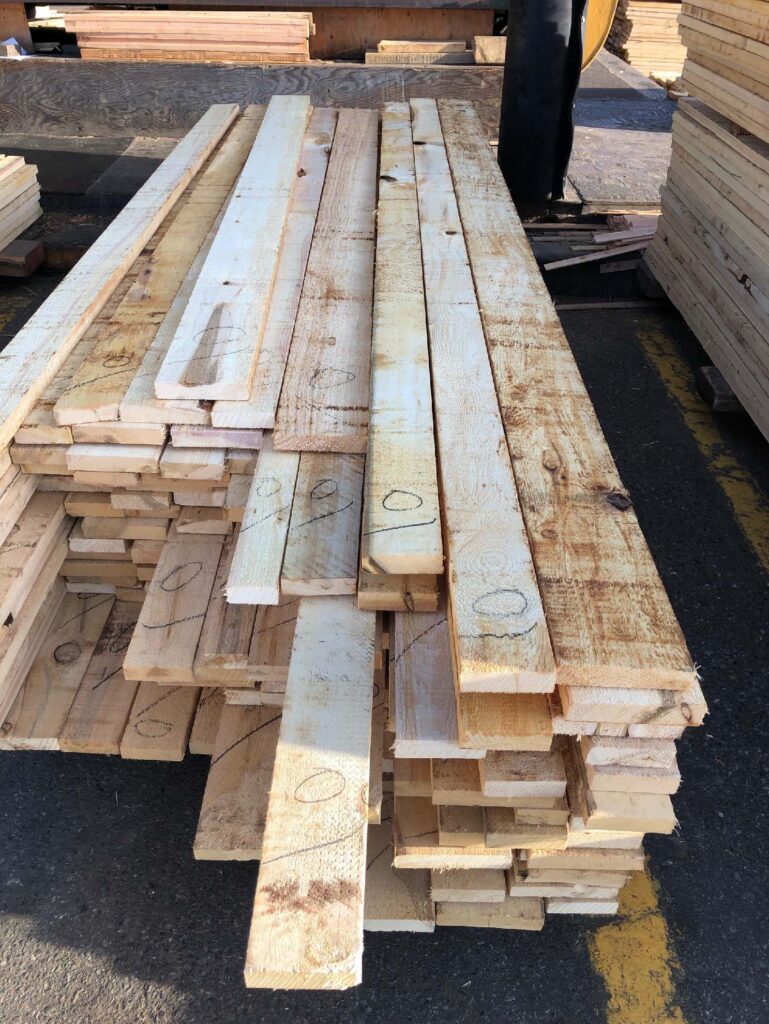
C & Better Clear
Graded per NLGA grade rules – no prior selection on our C & Better Clear. Majority of the stock is knot free, very sparse occasional small knots allowed, no significant blue/brown stain allowed, no full face sapwood (heartwood must break plane), this will be decent, clean clear.
No. 1 Shop through D-Clear
Graded per NLGA grade rules – We target 3’ clear cuttings or better on
this – defects to chop/rip out would include large knots, checks, possible minor rot, minor wane. Full
face sapwood is allowed in our shop. Some light blue/brown stain allowed but not as part of the clear
cuttings.
Standard Grade
It’s a knotty grade. This grade does not allow for rot, however short straight checks
are allowed, knots both soft and inter-grown are allowed, light to medium blue/brown stain is allowed,
occasional scattered pinholes are also allowed.
Utility Grade
Utility grade will include a component of rot, we try to limit this to 30%. Additional
defects will be large knots both soft and intergrown, occasional possible bug/toredo holes, medium to
heavy blue/brown stain, occasional possible checking, occasional scattered pinholes, occasional
possible wane.
